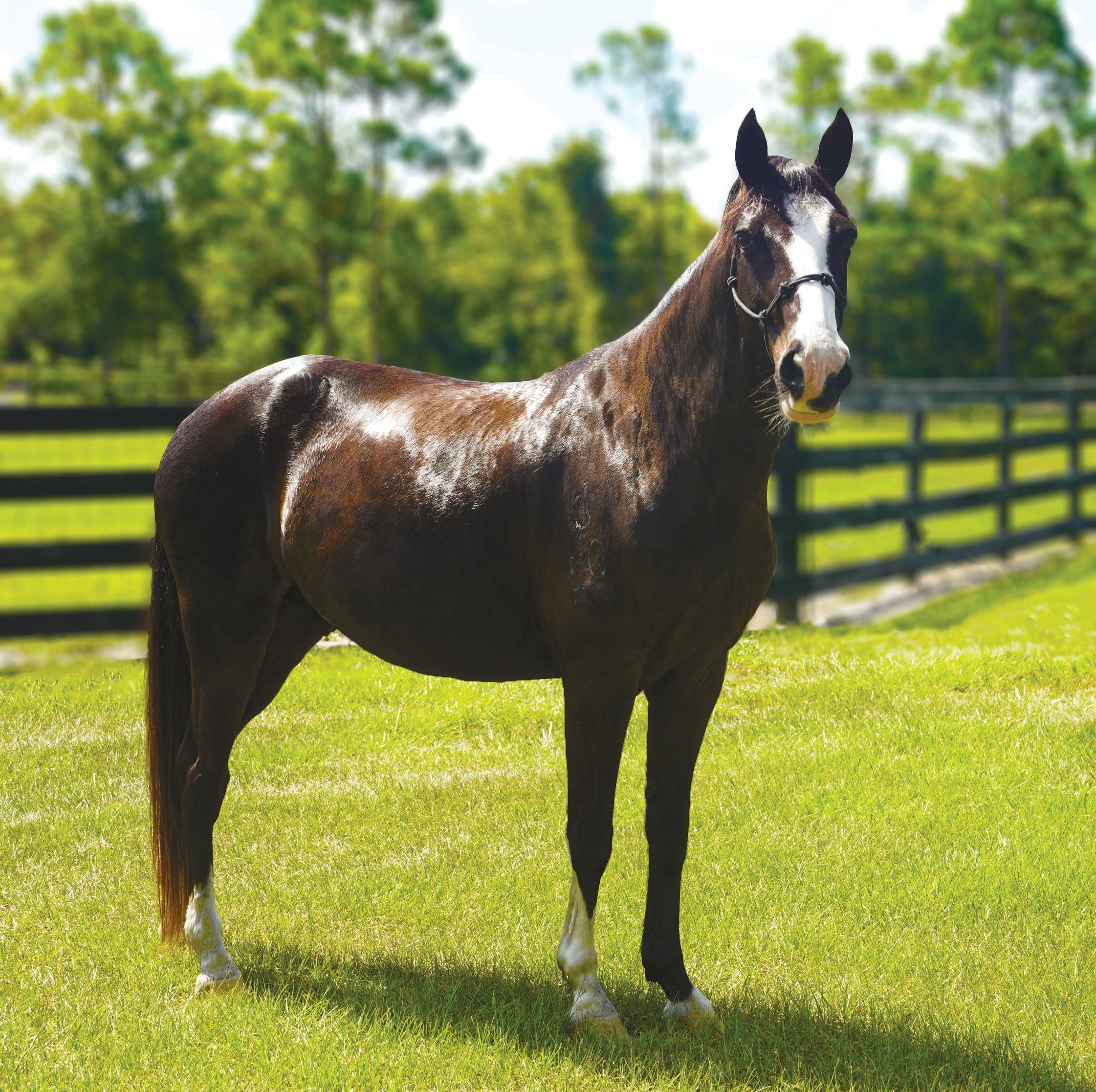Life in our Foothills October 2023 – Triumph Over Trauma – The Inspiring Tale of Ishmael
Published 2:17 pm Monday, October 30, 2023
|
Getting your Trinity Audio player ready...
|
It is hot today, so I have decided to stand in the shade and assess life here on the ranch. I spend a good portion of my day grazing and being lazy this time of year. I use this time wisely to contemplate which is the best form of exercise for me. This is one of the merits of being in a good home; one has time to ponder.
So much of the time I devote my column to horses that are in training to leave us. Many of these equines go on to do remarkable things. Did you know that one of the first ponies Helping Equines Regain Dignity saved, Stanley, went to the USEF Pony Finals in Kentucky this year? This is a very big deal. The Oliver family made that all possible by adopting him and investing in his exceptional training with Amelia Nowicki at Hidden Valley Farm in Inman, S.C. Grace Cashman has been his partner in the show world and the two are quite a team. Stanley is dashingly handsome. He is jet black in color, a head-turner, and an incredible mover and jumper.
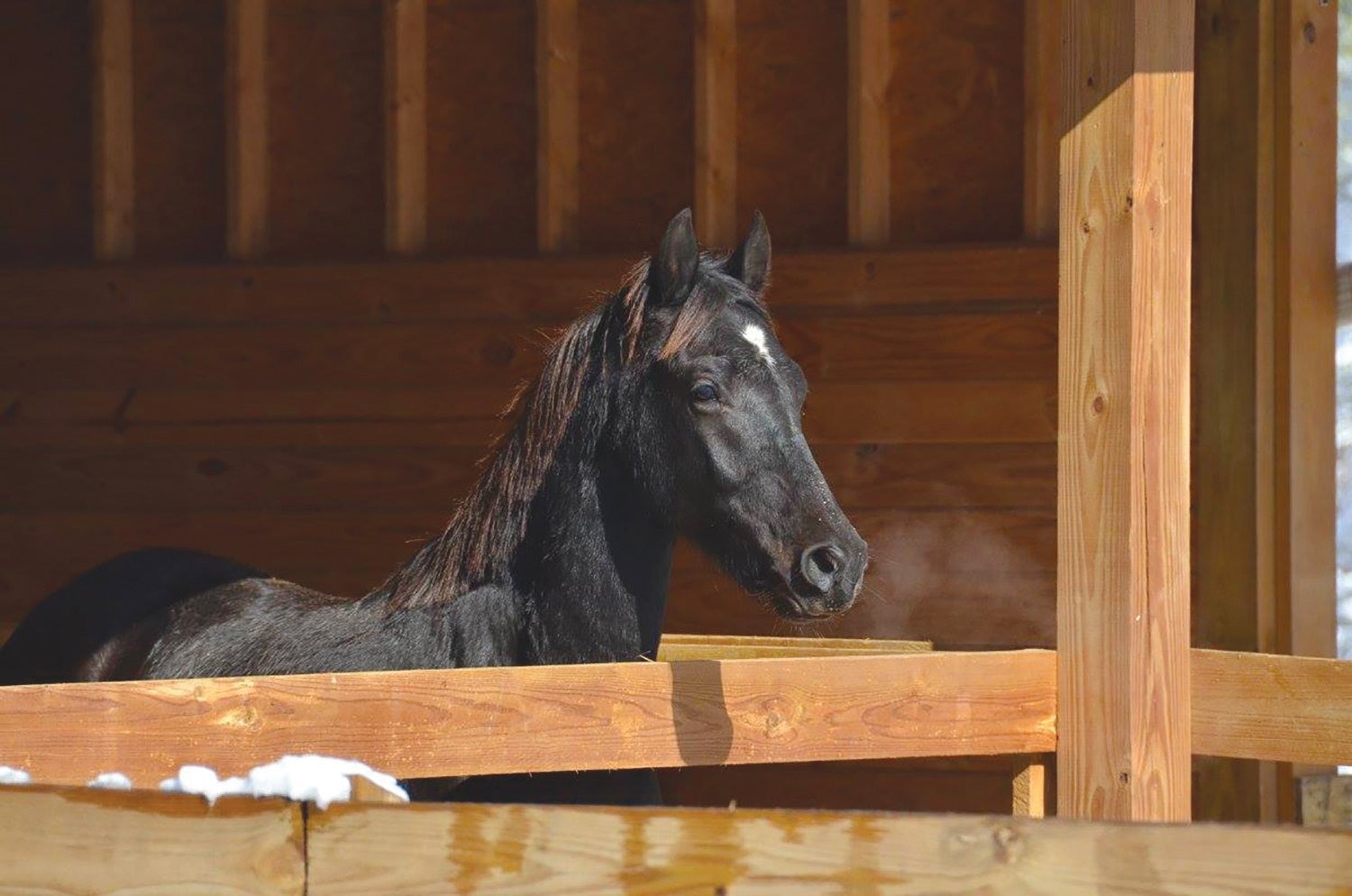
Stanley in HERD care after saving his life
We have another horse, also jet black, with four white legs and a huge blaze. He is also stunningly beautiful. His name is Ishmael. We saved him the same year as Stanley but he is much larger, at 15.1 hands. Unlike Stanley, he will not be going on to find a new adoptive home. Ishmael is staying put. He finds it good to be home, right here on the ranch with me.
Why, you ask, is such a beautiful horse in his prime a permanent fixture? This is because Ishmael was let down by humans when he was younger. He does not trust people. He is brave about scary situations, even big storms, which do not involve a person, but once that human element is added to the mix he freezes in fear.
When we saved Ishmael from a Louisiana kill lot, his coat was marred with recent burns. We learned that a person had thrown blistering agents at him to teach him a lesson.
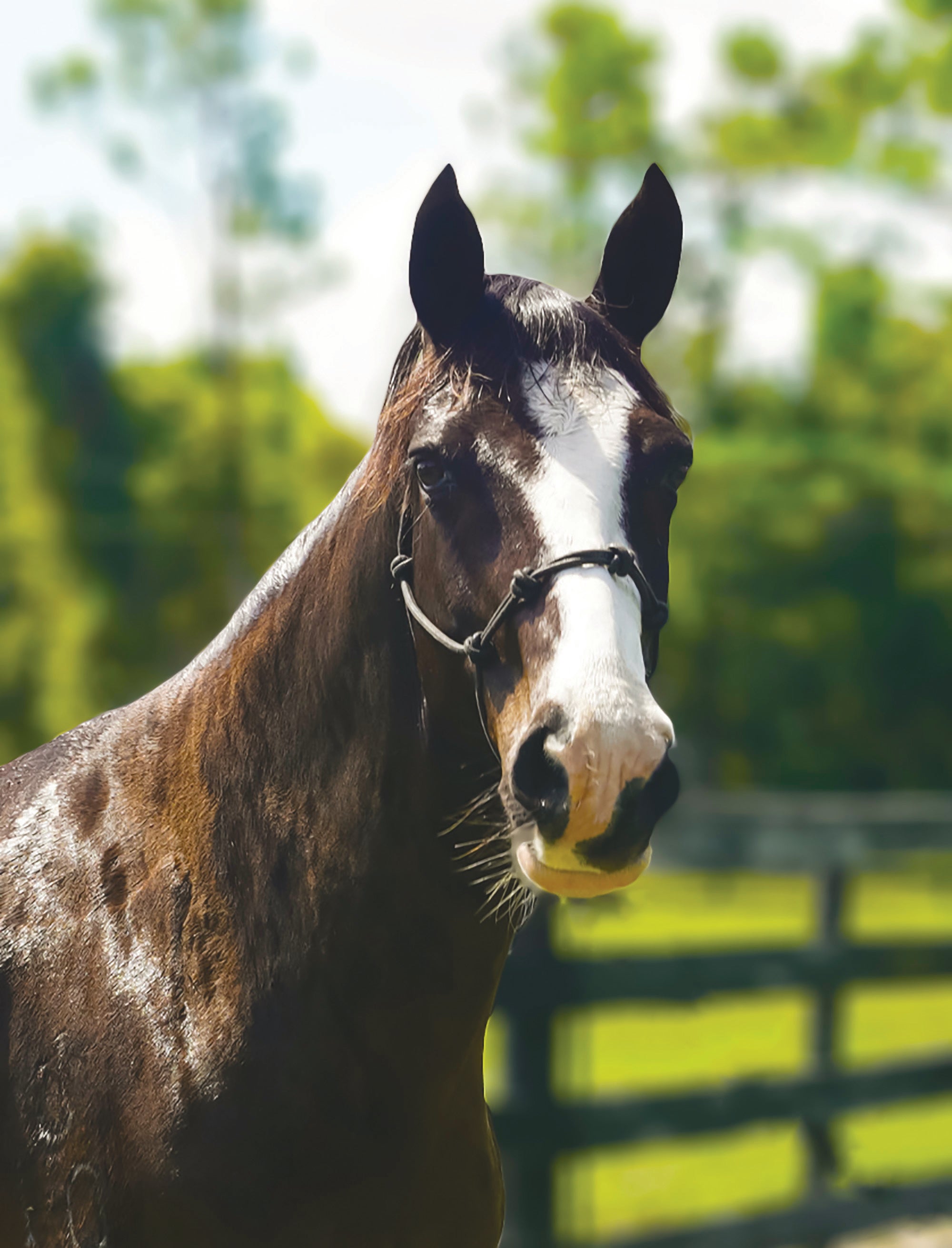
Ishmael
We originally thought Ishmael was a heritage breed, the Marsh Tacky. That is how they identified him at the kill lot.
Ishmael sports a big brand with a large J over a 10, over a five, on his right shoulder. When we contacted the Marsh Tacky Association, we got an immediate response that this brand was not a match. His size was also too large. Their director believed he was a similar type of rare breed horse with Spanish ancestry and put us in touch with the Florida Cracker Association. This is a gaited breed prized for its agility and speed imported here in the early 16th century; as colonial settlement progressed, they used the horses for herding cattle.
Currently age 13, Ishmael was born on March 29, 2010. His sire was Tequila and his dame CJR Bonnet 1. We saved him from going to slaughter in 2017. Through the brand and the Florida Cracker Association, we were able to track down his history and his registration papers. This magnificent horse was born and raised in St. Cloud, Florida by a breeder, Allen Broussard of the Crescent J Ranch. Broussard focused on maintaining the historical unique ranching heritage of Florida. His spread was home to the largest herd of Spanish Colonial horses, also known as “Cracker” horses, as well as a large herd of Spanish Colonial cattle. Well-broke to ride and used to work cattle as a young horse, Ishmael ended up in a kill lot because he was sold at an auction when the ranch downsized their herd. Someone who bought Ishmael thought they could make him gait higher, more like a walking horse, if they practiced the cruel art of soring his feet and legs.
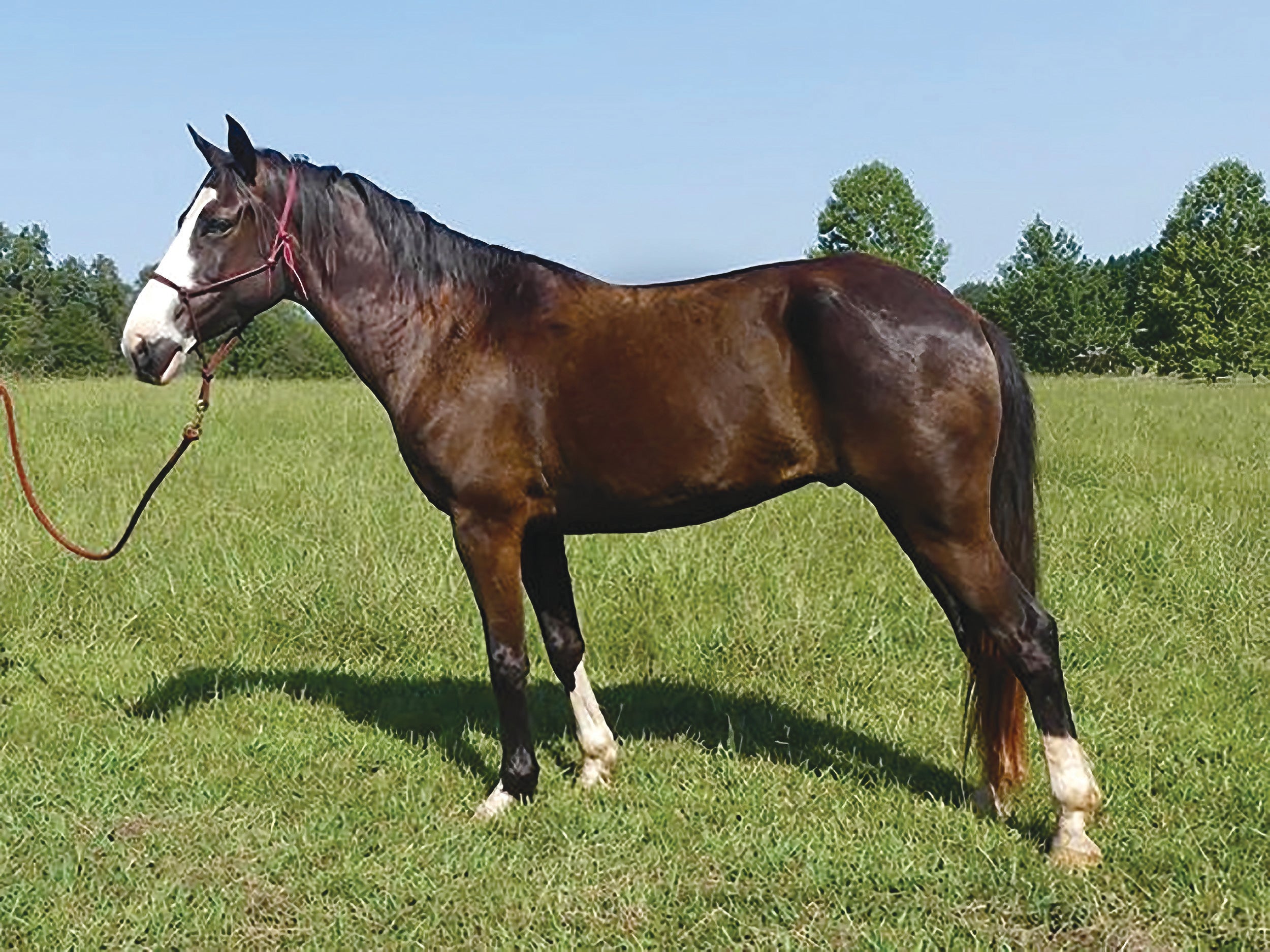
Ishmael six months later enjoying the foothills grass
Soring involves the intentional infliction of pain to a horse’s legs or hooves to force the horse to perform an artificial, exaggerated gait. Caustic chemicals—blistering agents like mustard oil, diesel fuel and kerosene—are applied to the horse’s limbs, causing extreme pain and suffering. Soring has been a widespread practice in the Tennessee walking horse show industry for decades. Today, judges continue to reward the artificial “Big Lick” gait. This sadly encourages participants to sore their horses, allowing the cruel practice to exist.
When Ishmael reacted by rearing from the repeated soring applications, in anger his owner beat him. He then threw the blistering agents onto Ishmael’s neck and back, burning him harshly. This ruthless person then disposed of him at a local livestock auction, where only the kill buyer wanted him.
This is how Ishmael, a registered rare breed, cattle-driving horse, made his way to us.
Upon his midnight arrival, the hauler unloaded him off the trailer at our farm in Campobello. Ishamel trembled. He had traveled well and quietly. Now he was frozen in fear. He was so thin and frightened. This horse did not want to be touched. Scott, Heather’s husband, led him to a comfortable stall for the night to rest. In the morning, he was still cowering when a human entered his space. Scott coaxed him out to a private paddock.
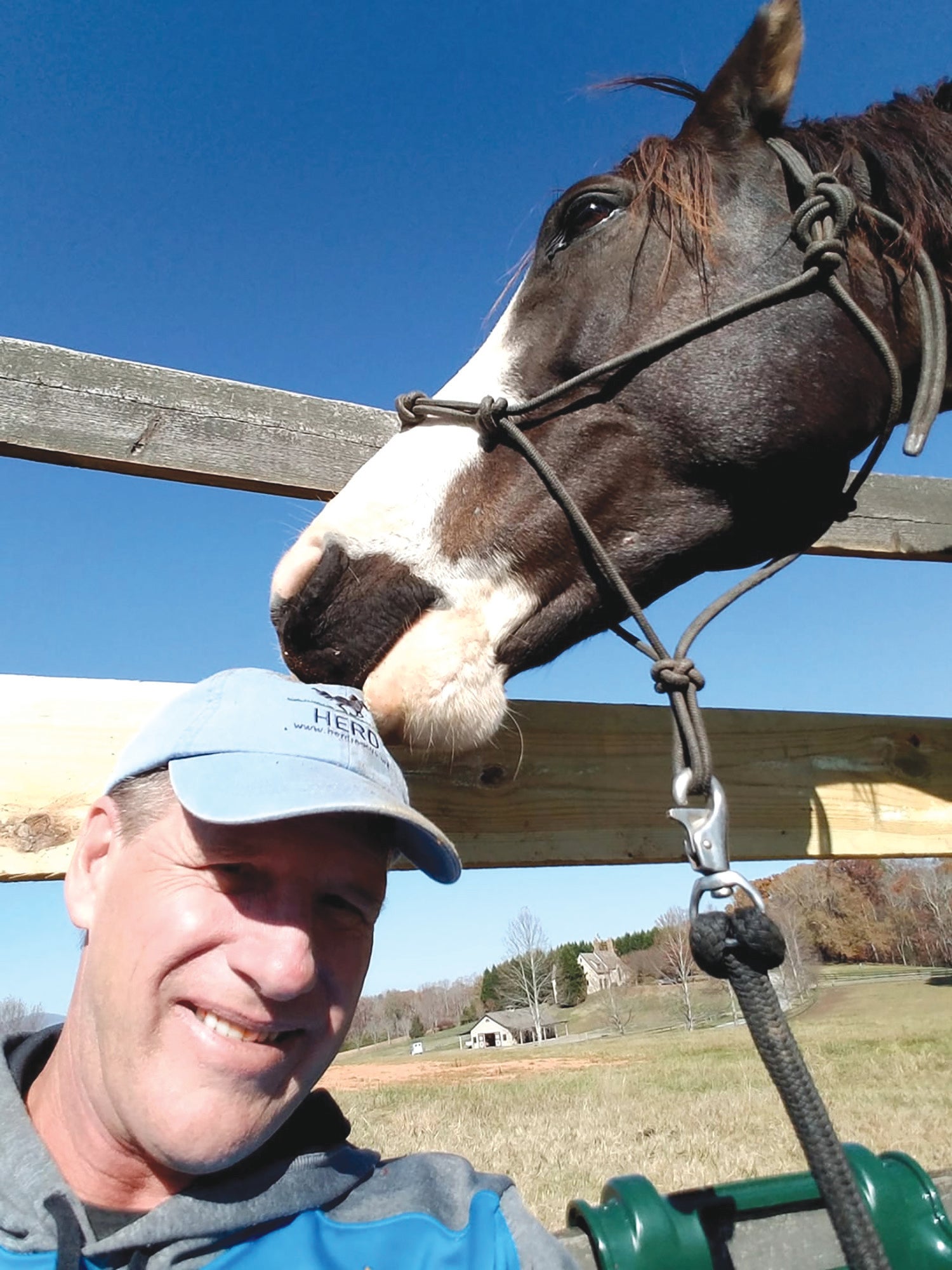
Scott Homstead bonding with Ishmael
I looked over at him from my stall with utter sympathy. I too had come from a terrible place, but I had never known this level of abuse.
Today, Ishmael is in excellent condition. He lives happily sharing a 10-acre pasture, with a big run-in shelter and a lovely canopy of trees, with young Ming 6 and Joe Black. Volunteer Bill McClelland feeds him each morning and spoils him with treats. We can have his hooves trimmed and vaccines done, but it is not easy. His fear of humans is so ingrained that he trusts few people and is reluctant to accept kind gestures. Ishmael will remain safe here with us. No more harm will befall him in our care. If asked, he would tell you it is good to be home.
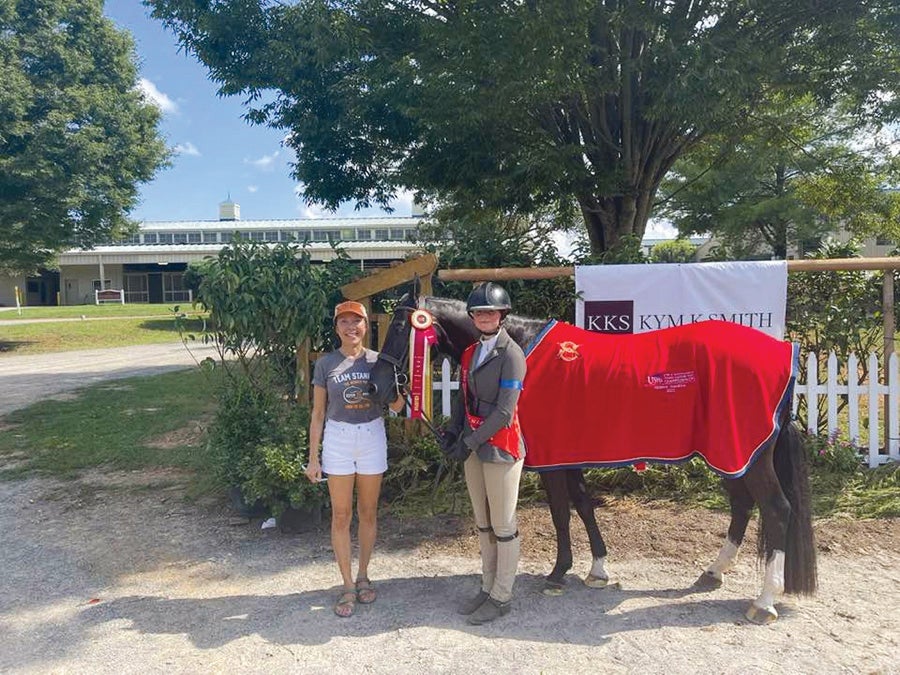
Stanley with Kim Oliver and show ring partner Grace Cashman


